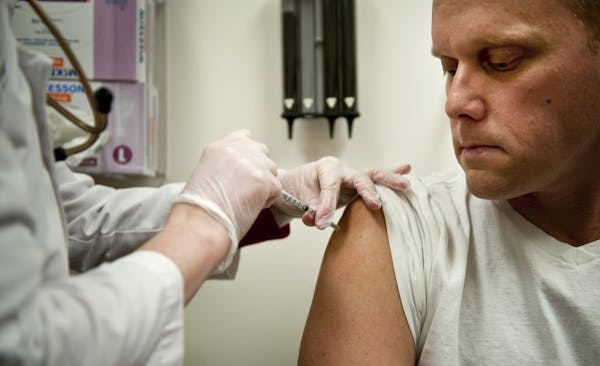Another 23 deaths have been confirmed, and more than 400 people have been hospitalized, in a flu outbreak that is straining hospitals and clinics in various parts of the state, the Minnesota Department of Health announced Thursday.
Health officials confirmed that the outbreak, which recently claimed the lives of two teenagers, is more severe than normal. At the same time, they stressed that it is taking a far greater toll on older people than younger ones, just as it does in most years.
"Obviously we're experiencing a high level of activity, but it is important to keep it in perspective," said Dr. Edward Ehlinger, Minnesota's health commissioner. "What is occurring has happened before. This is what influenza looks like, this is what it can do."
The number of flu-related deaths spiked tenfold last week, up from two deaths in the last week of December, the department said.
Since October, a total of 27 people have died of flu-related causes in Minnesota, including a 14-year-old St. Louis Park girl and a visiting 17-year-old Texas boy. The other victims were in their 50s or older, the state reported.
Nearly two-thirds of the people hospitalized with the flu have been age 65 or older, Ehlinger said, an age group that's most vulnerable to complications of the flu.
In fact, so many patients have come from nursing homes that the Health Department is advising those facilities to take steps to restrict visitors to help curb the spread of the virus.
In all, 1,121 people have been hospitalized in Minnesota since the start of the flu season, more than twice last year's total.
Last week alone, 401 people were hospitalized, forcing some hospitals to activate emergency plans to try to cope with the flood of patients.
Officials said the plans, which were developed for flu pandemics, allow them to transfer patients or supplies, if needed, from one hospital to another. "We've been planning for things like this over the last 10 years," Ehlinger said.
The flu is also straining outpatient clinics. This week, Allina Health started urging patients to consider e-visits -- essentially, virtual visits by e-mail -- rather than showing up in person, to avoid long waits and possible exposure to other sick people.
At least one health official speculated that this could turn out to be the peak of the flu season.
"I would guess that within the next number of weeks, we would start to see a downturn," said Dr. Ruth Lynfield, the Minnesota state epidemiologist.
In its weekly update on flu cases, the Health Department also reported that:
• 28 nursing homes had flu outbreaks in the first week of January, up from 17 the week before.
• Five schools had flu outbreaks last week. (Schools were closed during the previous week.) Since October, a total of 138 school outbreaks have been reported.
Last year, 33 people died and 552 Minnesotans were hospitalized in what was considered a relatively mild flu season.
State officials say this year's outbreak may rival or exceed the number of cases in the 2009-2010 H1N1 pandemic, when more than 1,700 Minnesotans were hospitalized and 67 died.
Maura Lerner • 612-673-7384

Minnesota Sports Hall of Fame: A class-by-class list of all members

This retired journalist changed professional wrestling from Mankato

